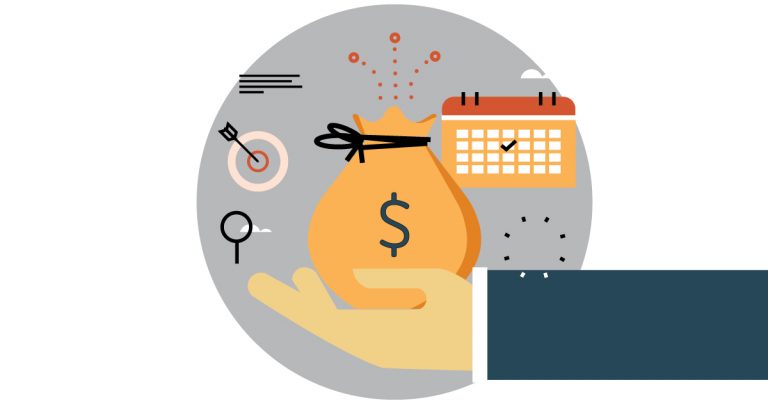Emergency Federal Funding Jolted State Spending on K-12 During Fiscal 2021

Backed with unprecedented federal funding to weather the pandemic, states collectively spent an estimated $483 billion on K-12 during fiscal 2021, a year-over-year increase of 12.3 percent, according to a new analysis.
A report from the National Association of State Budget Officers provides a breakdown of individual state expenditures on K-12 during the most recent fiscal year, one in which states spent an estimated $36.3 billion in federal emergency funding on varying needs for their school systems.
By comparison, during fiscal 2020, states spent about $8.2 billion in federal dollars on K-12.
Over the past two years, three separate federal emergency funding measures have delivered roughly $190 billion to help districts cover a variety of priorities, from technology to academic interventions to buying equipment, in an effort to provide students and staff with a stable learning environment during the pandemic. EdWeek Market Brief recently took a deep look at how school systems in Denver, Dallas, and other communities are spending their share of federal emergency aid. Our story describes ambitious efforts in tutoring, bolstering social-emotional learning, out-of-school learning and other areas.
That massive injection of federal funds, along with a laundry list of changing purchasing priorities during the pandemic, is driving the overall increase in state expenditures on K-12, the report says. Thirty-five states reported spending more on K-12 during fiscal 2021 when all funding sources are factored, and 44 states reported increases during the prior fiscal year.
But in fiscal 2021, states largely ramped up their expenditures of federal funds for K-12, the report notes.
In total, states collectively increased their K-12 spending with federal dollars by almost 64 percent during fiscal 2021, helping push the estimated total expenditure amount when including state funds to $482.9 billion to help school systems. In comparison, state spending on K-12 during fiscal 2020 with federal dollars increased about 8 percent year-over-year. Total state spending, including state funding, on K-12 rose by 5.2 percent in fiscal 2020 compared to the year prior.
Looking Ahead: Stable Conditions Likely in 2022
The report points out that states have yet to spend the bulk of their emergency federal dollars dedicated for K-12, also commonly referred to as ESSER funds, and in addition to that money states also received smaller pots of cash they could apply broadly to K-12 needs.
About a year ago, K-12 funding was facing a potentially dire situation as deep cuts to state budgets were widely expected. Data released by NASBO in October 2020 showed that for the first time in roughly a decade — since the last recession — a majority of states closed their fiscal 2020 books with a decline in general revenue funds.
However, data released over the summer showed signs of improvement for state budgets compared to the darkest economic periods of the pandemic. And now state spending plans are not expected to see the deep cuts that many feared, leading to plans for governors to funnel more money into school districts in the coming years.
“State spending reductions to K-12 education have been minimal during the pandemic, and those that did occur in some cases have since been restored as state fiscal conditions have improved,” the report says. It notes that some instances of spending decreases were connected to declining enrollment related to the pandemic.
State fiscal conditions are projected to remain stable in 2022, per the report, but the challenge moving forward for states will be contending with the one-time nature of the federal stimulus funding, along with a “shifting economic landscape brought on by the pandemic, as well as both new and ongoing spending pressures.”
Overall, states spent about 18 percent of all their funds — federal and state — on K-12 education in fiscal 2021, about the same as the year before, according to the report.
Not counted in the NASBO K-12 state expenditures: most districts wholly or partially excluded spending figures for things such as day care, school health and immunizations, Head Start programs and on libraries. Fifteen states wholly or partially excluded early education/preschool spending, while 22 states wholly or partially excluded capital expenditures.
Five states are estimated to have spent the most on K-12 during fiscal 2021, when considering federal and state funding, according to the report:
- California: $89.6 billion
- Texas: $35.2 billion
- New York: $32 billion
- Michigan: $21.9 billion
- Pennsylvania: $18.7 billion
In addition, the five states that spent the most on K-12 during fiscal 2021 — in federal funds only — according to the report, are:
- California: $26.6 billion
- Michigan: $8 billion
- Texas: $5.9 billion
- Pennsylvania: $5.4 billion
- New York: $3.2 billion
Follow EdWeek Market Brief on Twitter @EdMarketBrief or connect with us on LinkedIn.
Image by Getty
See also:
